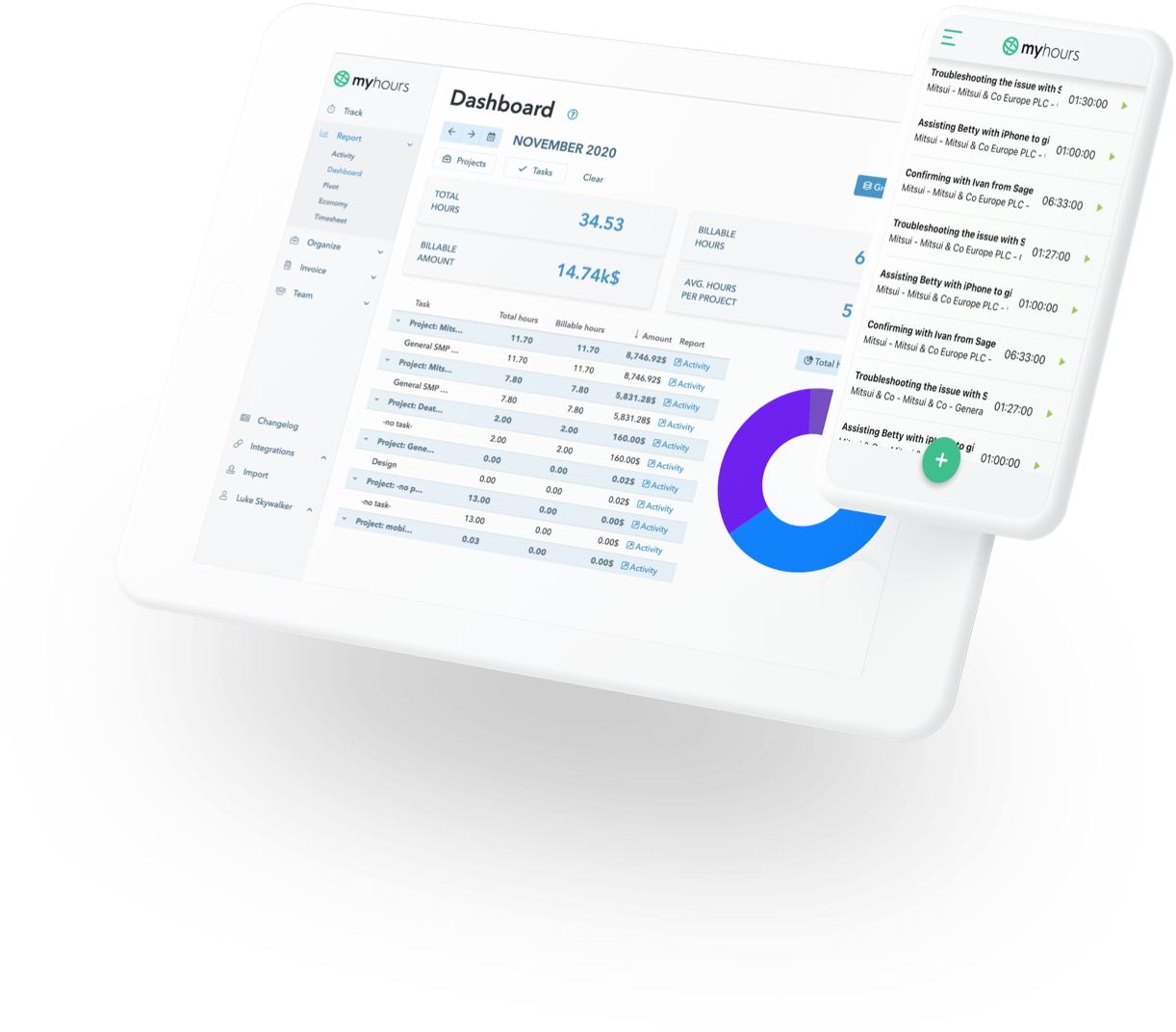5 top tips on how to manage a small team like the best leaders do

Managing a team can sometimes be tricky. Team performance, its overall success and productivity usually depends on how successful the team leader can manage his team. Read these top 5 tips and become a better leader.
There’s no doubt that great managers must also be great leaders. Some people say that leadership is like beauty. Hard to define, but you know it when you see it.
Here at Spica we were not satisfied with such an answer, so we decided to read hundreds of articles on how to manage a team and summarize them in five top tips.
How to successfully manage a team:
Now let’s dive deep into each of these top five tips.
1. Clear purpose, goals and expectations for the team
All successful team management starts with answering two very basic questions – why the team exists, and which goals need to be meet (on the individual and team level). The “why” speaks to the heart and the goals speak to the mind. To get the best out of people, you need to address both.
In organizations and teams, everything starts with why. The “why” describes the mission of an organization (or a team) and provides the core belief behind why the team exists.
It gives purpose to the team, a sense of mission and emotional drive, especially for going through hard times. The “why” is also the glue that brings people together and connects them on an emotional level.
But having a strong drive is never enough. You also need to have a clear goal of what must be achieved and what steps to take to get there.
Too many times, managers assume that the team just knows what needs to be done and how it can be achieved.
Since people can’t read minds, you always need to clearly communicate what needs to be done, what is expected from each individual, and what are the standards.
The basic management tools everyone must use:
- Start with why: provide a clear emotional purpose of why the team exists
- Write down the team’s goals: make sure everyone knows what the team must achieve next
- Script the critical moves: provide a plan of how the goals will be achieved in small manageable tasks
- Delegate tasks in a smart way: make sure that the right people tackle the right set of tasks (according to their abilities and potential)
- Definition of done: clearly define the standards that you expect for each task
2. Build trust among team members
The Five Dysfunctions of a Team written by Patrick M. Lencioni is one of the best books on leadership and team management.
It talks about five big dysfunctions of a team that need to be addressed separately and in the right order. The five big dysfunctions are: Absence of trust, fear of conflict, lack of commitment, avoidance of accountability and inattention to results.
As you can see, it all starts with an absence of trust. If there’s no real and deep trust among team members, the team just can’t properly function.
If the team members are in the defensive mode because there is an absence of trust, then they often don’t support each other, they gossip, manipulate or even plot among themselves. It’s a big waste of energy, time and efficiency.
A sign of mistrust among team members is when team members are not open with one another. But the big question is, how to build trust among team members?
An HR software company Know Your Team did a study among 597 successful leaders, to find the leadership behavior traits that truly build trust among team members.
Surprisingly, the most effective ways to build trust are not what leaders usually assume.
To be more exact, activities that have a small impact on building trust among team members are:
- Team building
- Giving recognition
- Complete transparency
Activities that have the highest impact on trust building:
- Showing vulnerability as a leader
- Communicating the intent behind actions
- Following through on commitments
Thus, as a leader be human and show your vulnerabilities. Show genuine interest in your team members, encourage them to share experiences, demonstrate credibility and integrity, follow through in multiple ways, and clearly communicate the intent behind your actions as a leader.
3. Hold regular planning and review meetings
Meetings can be a huge waste of time. But not if they’re managed properly with a very clear and specific intention.
By far the best framework for team meetings is offered by the SCRUM agile methodology. SCRUM has become very popular in the past decade and is used by thousands of successful teams all over the world. It has roots in software development but is today used in many different industries.
The basis of SCRUM planning and reviewing are so‑called sprints. A sprint is a short, usually bi-weekly time-boxed period, when a team works to complete a set amount of work. During the sprint there should be 3 main types of meetings held:
Sprint planning
At the sprint planning meeting, the team decides what will be completed in the next 14 days. The most important tasks should be selected and visualized on the Kanban board.
Team members’ capacity should be reviewed, together with days off, and each selected task should be assigned to a specific team member. It gives a clear answer to what needs to be done.
Daily stand-up meeting
The stand-up meeting should be held every morning for 15 minutes maximum. It’s called a stand-up meeting because team members should be standing during the meeting, to really keep it under 15 minutes.
It should be held every day, at the same time, in the same place. Each team member answers only two questions:
- What did I do yesterday?
- What will I complete today?
The main intention of the morning meetings is to keep the rhythm of the team and visibility of the work done.
Sprint review and retrospective
After the sprint ends, the team should review the work done and which items were not completed and why. The team should also do a retrospective analysis of what went well during the sprint, and what unexpected problems the team ran into. In the end, the team should brainstorm how they can improve.
The team needs a clear planning and monitoring structure, with regular face-to-face communication. Such an approach leads to team commitment, accountability and result orientation.
Because it’s clear who delivers and who doesn’t. At the same time, there’s enough opportunities for the team members to openly discuss different issues.
Thus, as a leader make sure you set a clear framework of how the tasks will be prioritized, delegated and supervised.
You can easily plan and manage your team with a project management software.
4. Track how team members spend their time
All great leaders know that it’s impossible to manage what you don’t measure. Since time is the most precious resource of every individual and team, tracking and then properly managing time (time relocation) is essential for keeping team productivity levels high.
When leaders introduce time tracking to their teams, they automatically increase productivity, focus and performance.
There are number of benefits to tracking time in teams (or as a freelancer):
- Every team member is automatically more productive and focused on the important tasks.
- You have a better sense of the team’s velocity for planning, forecasting and resource management.
- It’s much easier to find out where the team is wasting time or prioritizing wrongly.
- You can actually calculate the ROI of the team’s work.
- Invoicing is much easier.
- It helps to create a daily routine and habit
Great leaders are oriented towards people (relationships) and goals (results). Time tracking helps a great leader to keep people productive and results‑oriented.
Time‑tracking reports give better insight into how team members are performing and how to optimize individual and team productivity. It can be hard to introduce time tracking into a daily routine, but when it’s done it does wonders to team productivity.
We invite you to test My Hours cloud-based time tracker for 30 days for free. With our user-friendly time tracker, the team members will track their time effortlessly, you as a leader will have very useful reports, and the productivity of your team will skyrocket.
5. Be a good coach to your team
Google Oxygen Project investigated for a decade what the best managers at Google do differently and what kind of impact they have on team performance. The conclusion of their study was clear: the quality of management has a very big impact on the team’s and company’s performance.
They identified eight behaviors that differentiate great leaders from average ones. Great leaders:
- Regularly coach their teammates.
- Empower their team and don’t micromanage.
- Express interest in the team members’ professional and personal well-being.
- Are productive and result oriented.
- Are extremely good communicators, meaning they listen and share information.
- Help their teammates with career development.
- Have a clear vision and strategy for the team.
- Possess enough technical skills to advise the team.
The number one thing that great leaders do differently is that they coach their team members. They take time for every individual to show them how things can be done better, they provide encouragement, support and other resources needed for people to thrive.
Great leaders as coaches actively listen, build rapport, ask questions and give constructive feedback. If you want to successfully manage a team, you must become a good coach.
Have we forgotten any important time management tips for leading small teams? Write to us and we will add them to the list.
How to effectively manage a team
Here are the five tips that will help you to effective manage any team:
- Start with why: provide a clear emotional purpose of why the team exists
- Write down the team’s goals: make sure everyone knows what the team must achieve next
- Script the critical moves: provide a plan of how the goals will be achieved in small manageable tasks
- Delegate tasks in a smart way: make sure that the right people tackle the right set of tasks (according to their abilities and potential)
- Definition of done: clearly define the standards that you expect for each task
Find out more details about managing a team in our article.
How long should the daily stand-up meeting be?
The maximum for the Daily stand-up meeting that you are having with your team is 15 minutes.
There are two questions that should be answered by everyone in the meeting:
- What did I do yesterday?
- What will I complete today?








